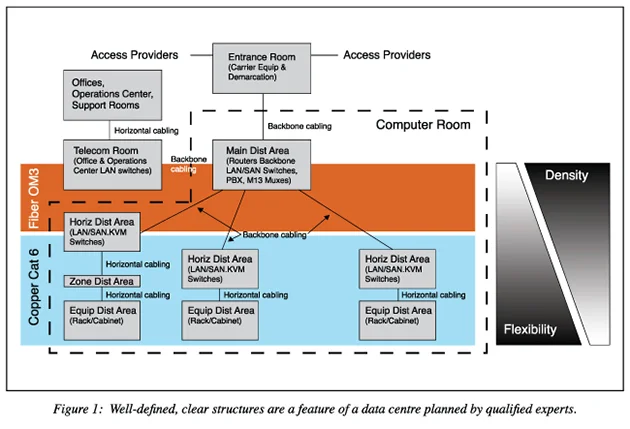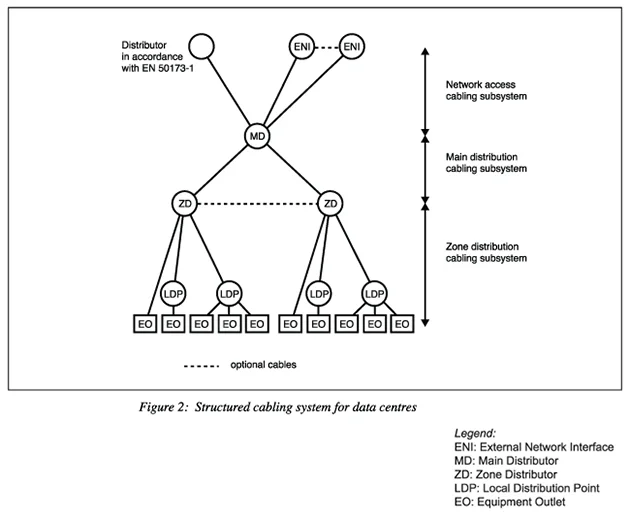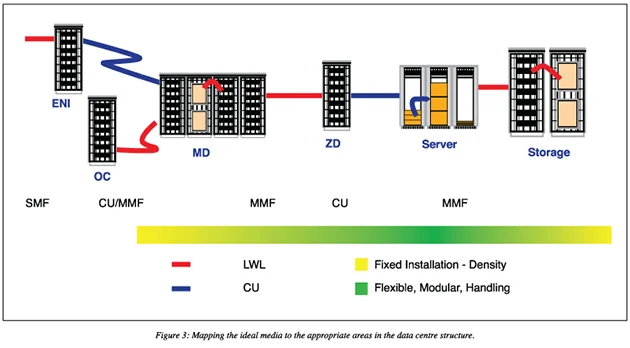- Services
- /
- Data Centre Cabling
Data centre cabling
Data center cabling refers to the network of cables connecting various equipment within a data center, which includes LANs, switches, servers, storage area networks (SANs), and other active equipment that facilitate network connectivity and power distribution. This can be structured or unstructured. Stable cabling is important for optimal network performance, reduced downtime, enhanced security, and scalability to meet future needs. We provide innovative data center cable installation services and support clients to meet demands for reliable and flexible data center infrastructures. We develop our data center cabling design such that it aligns with the future growth of business and keeps up with the fast-evolving trends of the market space. The interface of the data center equipment and the data bandwidth requirements of the organization are considered to determine the type of cables needed. The main types of network cables used in data centers are ground, copper, and fiber optics. With our support for cable management in the data center, customers get access to a healthy network environment and an organized, tidy space


Structured Cabling Framework for Efficient Data Centers
A well-structured data center relies on an organized cabling system that ensures seamless
connectivity, scalability, and performance. This framework utilizes both fiber (OM3) and
copper (Cat 6) cabling to facilitate rapid data transfer among essential locations, including offices, operations centers, support rooms, and telecom rooms. Backbone cabling integrates critical network infrastructure that includes routers, LAN/SAN switches, PBX systems, and multiplexers, ensuring a reliable and high-density network environment.
Horizontal cabling enhances connectivity to distribution zones and equipment racks,
allowing for easy future expansions. By establishing well-defined areas like the Main Distribution Area, Horizontal Distribution Area, and Equipment Distribution Area, this organized method improves data flow and reduces network interruptions, making it an essential component of contemporary data center design.

